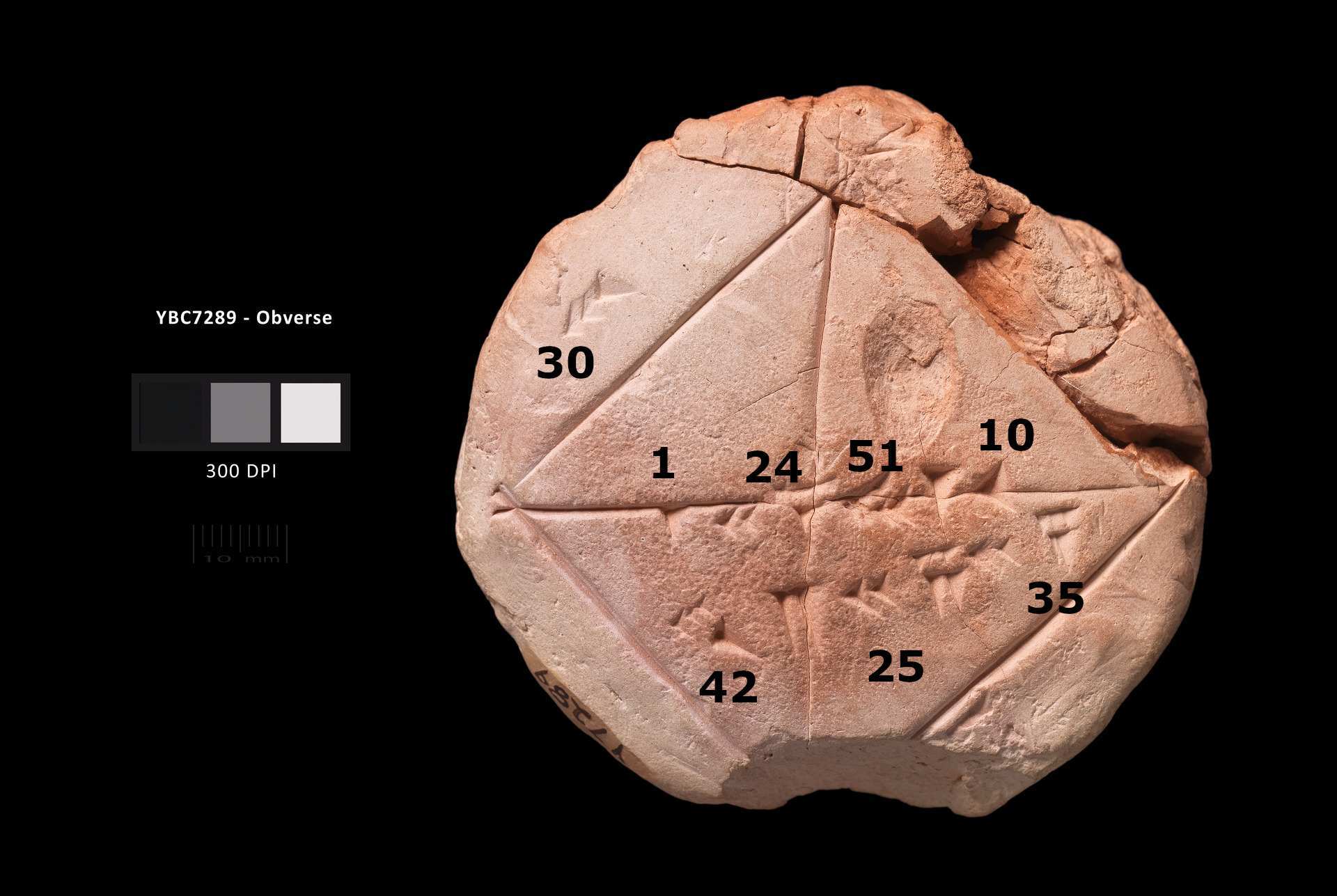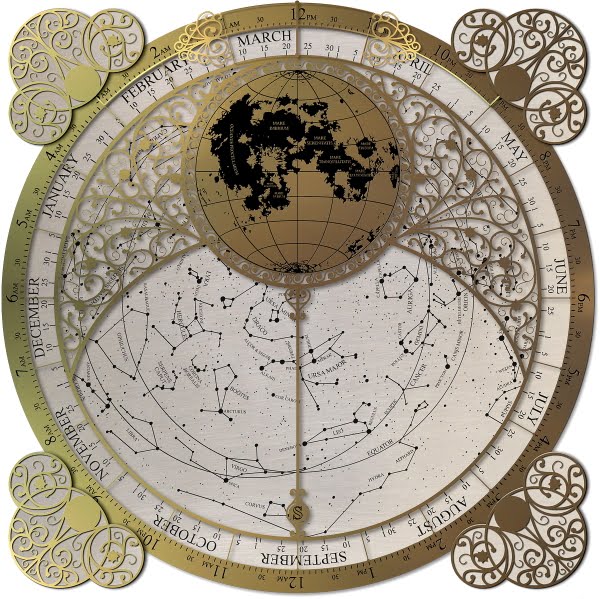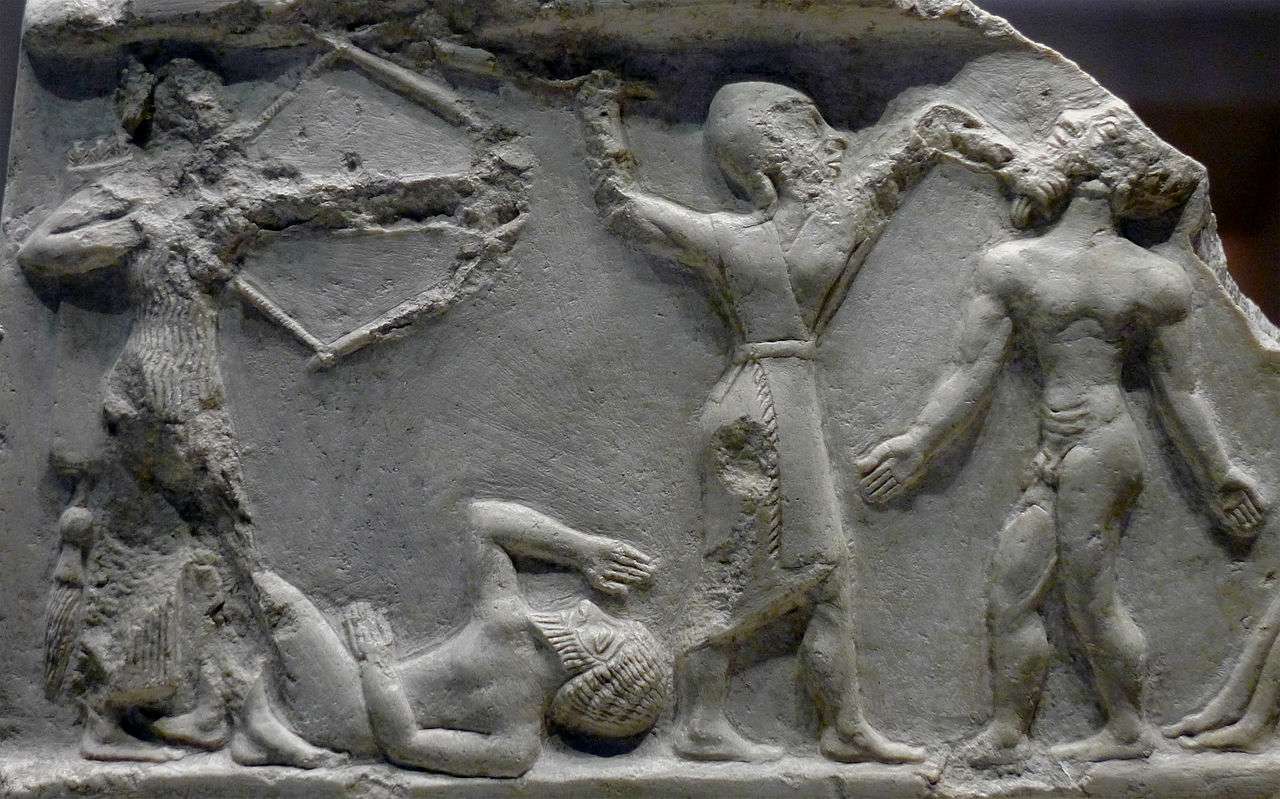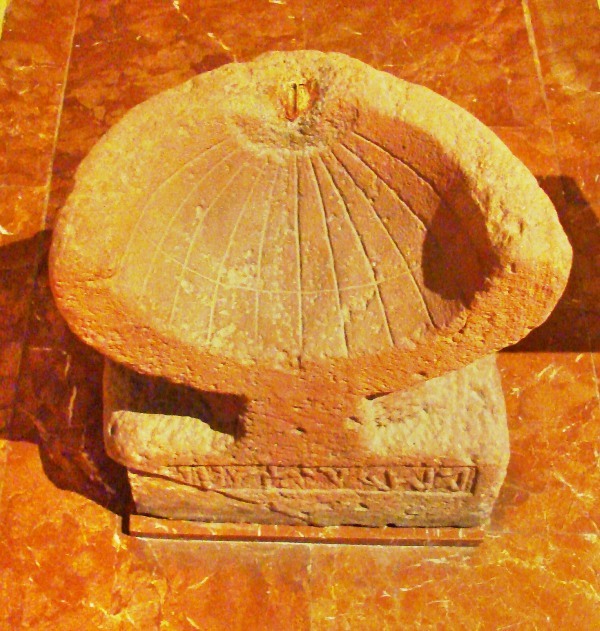Many ancient civilizations had a concept of time, although vague. Obviously, they knew that the day started when the sun rose and the night when the sun disappeared over the horizon. But the ancient Sumerians, watching the skies, developed a much more complex system.
They realized that it was possible to divide the hours into 60 minutes and the days into 24 hours, developing the time measurement systems used today.
 Labeled photograph of the Yale Babylonian Collection’s Tablet YBC 7289 obverse (YPM BC 021354). This tablet shows an approximation of the square root of 2 (1 24 51 10 w: sexagesimal) using the Pythagorean theorem for an isosceles triangle. Yale Peabody Museum description: Round tablet. Obv drawing of square with diagonal and inscribed numbers; rev drawing of rectangle with inscribed diagonal but numbers badly preserved and unable to be restored; mathematical text, Pythagorean tablet. Old Babylonian. Clay. obv 10 © Wikimedia CommonsContents ▴ I. The ingenuity behind the concept of time created by the SumeriansII. Ancient people and the passage of timeIII. A round clock and a 24-hour day
Labeled photograph of the Yale Babylonian Collection’s Tablet YBC 7289 obverse (YPM BC 021354). This tablet shows an approximation of the square root of 2 (1 24 51 10 w: sexagesimal) using the Pythagorean theorem for an isosceles triangle. Yale Peabody Museum description: Round tablet. Obv drawing of square with diagonal and inscribed numbers; rev drawing of rectangle with inscribed diagonal but numbers badly preserved and unable to be restored; mathematical text, Pythagorean tablet. Old Babylonian. Clay. obv 10 © Wikimedia CommonsContents ▴ I. The ingenuity behind the concept of time created by the SumeriansII. Ancient people and the passage of timeIII. A round clock and a 24-hour day
The ingenuity behind the concept of time created by the Sumerians

Ancient civilizations looked to the heavens to mark the passage of time.
The Sumer, or “land of the civilized kings”, flourished in Mesopotamia, where today is located modern Iraq, around 4,500 BCE. The Sumerians created an advanced civilization with its own system of elaborate language and writing, architecture and arts, astronomy and mathematics. The Sumerian Empire did not last long. However, for more than 5,000 years, the world remained committed to its definition of time.

The celebrated Babylonian mathematical tablet Plimpton 322. © Christine Proust and Columbia University
The Sumerians initially favoured the number 60, as it was very easily divisible. The number 60 can be divided by 1, 2, 3, 4, 5, 6, 10, 12, 15, 20 and 30 equal parts. In addition, ancient astronomers believed that there were 360 days in a year, a number that 60 fits perfectly six times.
Ancient people and the passage of time
Many of the ancient civilizations had an approximate notion of the passage of time. as the passage of days, weeks, months and years. A month was the duration of a complete lunar cycle, while a week was the duration of a phase of the lunar cycle. A year could be estimated based on the changes in the season and the relative position of the sun. The ancients realized that observing the skies could provide many answers to questions considered complex in their day.
 Akkadian soldiers slaying enemies, circa 2300 BC, possibly from a Victory Stele of Rimush © Wikimedia Commons
Akkadian soldiers slaying enemies, circa 2300 BC, possibly from a Victory Stele of Rimush © Wikimedia Commons
When the Sumerian civilization came to decay, being conquered by the Akkadians in 2400 BCE and later by the Babylonians in 1800 BCE, each new civilization appreciated the sexagesimal system developed by the Sumerians and incorporated it into their own mathematics. In this way, the notion of dividing time into 60 units persisted and spread all over the world.
A round clock and a 24-hour day

Ancient Mesopotamian sundial at Archaeological Museum, Istanbul © Leon Mauldin.
When geometry was unveiled by the Greeks and the Islamists, the ancients realized that the number 360 was not only the time period of the Earth’s ideal orbit, but also the perfect measure of a circle, forming 360 degrees. The sexagesimal system began to solidify its place in history, becoming essential for mathematics and navigation (the Earth being divided into degrees of longitude and latitude). Later, the face of a circular clock was divided into pure, sexagesimal quadrants that gave 24 hours, each hour with 60 minutes, each minute composed of 60 seconds.
Source: https://mysteriesrunsolved.com/








